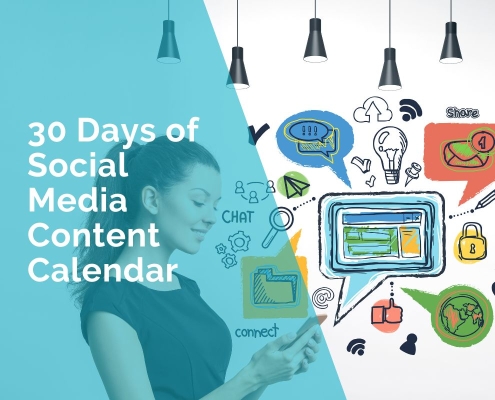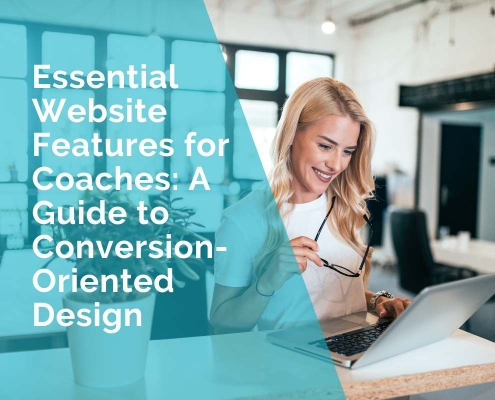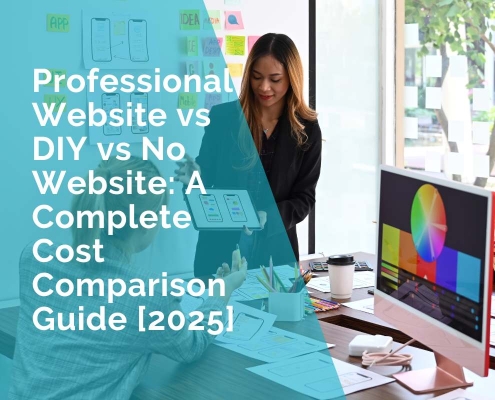The Ultimate Guide to Ecommerce Optimization in 2024
If you’re looking to boost your online store’s performance in 2024, understanding the intricacies of ecommerce optimization is key. This guide will delve into everything from refining your site’s structure to ensuring it’s perfectly tailored for mobile users. We’ll also highlight why picking the right SEO provider can make or break your online success. Whether you’re a seasoned marketer or just getting started, these insights will help you stay competitive in a bustling digital marketplace.
Optimizing Site Structure for Enhanced User Experience
A well-organized site structure isn’t just about making your website look neat; it’s crucial for both search engine optimization and helping your customers find exactly what they need with ease. Start by categorizing your products logically. Group similar items together and think about the paths a customer might take to reach a product they desire. This not only makes for a smoother shopping experience but also helps search engines crawl your site more effectively, which can boost your rankings.
Incorporating breadcrumbs is another smart move. These little navigational aids don’t just help users trace their steps back to broader categories; they also feed search engines with more information about the structure of your site. Breadcrumbs improve the way users interact with your site and enhance the overall structure of your URLs, making each page more intuitive to both users and search engines alike.
By focusing on these elements, you not only make your site easier to use but also set a strong foundation for all the other SEO efforts you’ll read about in this guide. With a solid structure in place, every change you make has the potential to push your online store to new heights.
Improving Site Speed for Better Performance
The speed of your ecommerce site can be a game-changer. When pages load quickly, visitors are more likely to stick around and browse, which increases the chances of making a sale. Start by compressing images without sacrificing quality. Large, unoptimized images can dramatically slow down page loads. Next, streamline your code by removing any unnecessary characters, spaces, or comments. This makes your scripts and stylesheets lighter and faster to load.
Another effective tactic is leveraging browser caching. This technique stores elements of your site in the user’s browser so that they don’t have to be reloaded on subsequent visits. This can significantly speed up your site for repeat visitors. You can use tools like Google’s PageSpeed Insights to identify areas where your site could be faster and to track improvements over time.
Ensuring Mobile Responsiveness and Usability
In today’s mobile-first world, having a website that adjusts seamlessly to fit smartphones and tablets is not just important—it’s essential. A mobile-responsive site adjusts the layout based on the size of the screen it’s viewed on. This means large, easy-to-tap buttons, readable fonts, and navigation that works intuitively on smaller devices.
To enhance mobile usability, prioritize the user’s journey. Simplify the path to purchase and minimize the number of steps needed to complete a transaction. Make sure your search function is prominent and effective, as mobile users often use search to navigate. Also, consider the placement and size of elements: fingers are less precise than mouse cursors, so interactive elements should be easy to tap.
Mobile usability doesn’t just improve the shopping experience; it also impacts your SEO. Search engines like Google prioritize mobile-friendly websites in their rankings, especially when it comes to searches made on mobile devices. By focusing on mobile responsiveness, you’re catering to both your customers and search engines, ensuring your site stands out in the crowded online marketplace.
Enhancing On-Page SEO for Ecommerce Success
On-page SEO is your control center for how search engines view your website. Start by optimizing your title tags and meta descriptions. These elements not only inform search engines about the content of your pages but also serve as your first sales pitch to potential customers in search results. Make sure they are compelling and include main keywords relevant to your products.
Headers are more than just formatting tools; they help organize your content and give search engines clues about the hierarchy of information on your page. Use H1 through H6 tags to structure your content effectively, making sure your primary keywords are included in at least some of these headers.
Don’t overlook the power of product descriptions. Beyond just describing what you sell, these descriptions should be optimized for search engines with relevant keywords. However, avoid stuffing keywords as this can detract from the user experience and even penalize your SEO efforts. Instead, focus on writing natural, informative descriptions that help convince visitors to make a purchase.
Incorporating structured data, or schema markup, is another powerful tool. It helps search engines understand the content of your website, enabling special search result features and enhancements. For ecommerce, this could mean displaying prices, availability, or review ratings directly in search results, making your listings more attractive to shoppers.
Implementing Effective Content Marketing Strategies
Content marketing does more than just fill your blog; it drives traffic, educates your consumers, and converts them into customers. Start by identifying topics that align with your customer’s interests and your product offerings. Create a mix of content types, from how-to articles and buying guides to trend insights and product comparisons, which can attract different kinds of visitors to your site.
Social media platforms extend the reach of your content and provide valuable channels for engaging directly with your customers. Share your content regularly on these platforms, encourage sharing, engage in conversations, and gather feedback to refine your strategies.
Videos can be particularly effective in an ecommerce context. Product demonstrations, behind-the-scenes looks, and customer testimonials are compelling content forms that can significantly enhance user engagement and SEO. Moreover, video content is highly shareable and can improve the time spent on site by visitors, which is a positive signal to search engines.
By weaving these elements together—SEO-focused product descriptions, diverse and engaging content, and active social media engagement—your ecommerce site can establish itself as a trusted resource, encouraging longer visits, better engagement, and, ultimately, increased conversions.
Utilizing Advanced SEO Techniques
Staying ahead in the competitive world of ecommerce often requires adopting advanced SEO strategies. One such tactic is optimizing your site for voice search, which has become increasingly popular with the rise of virtual assistants like Siri, Alexa, and Google Assistant. To capitalize on this trend, consider how customers might use natural language to find your products and integrate these conversational phrases into your content.
Artificial intelligence (AI) also plays a crucial role in modern SEO strategies. AI can help personalize user experiences, analyze user behavior, and optimize site layouts based on how users interact with your site. By leveraging AI-driven analytics, you can make data-backed decisions that enhance your SEO efforts and improve user engagement.
Don’t forget about the importance of local SEO if you operate in specific geographic markets. Ensure your local listings are up-to-date and optimized with accurate contact information, business hours, and relevant keywords to attract nearby shoppers. Additionally, encourage satisfied customers to leave positive reviews, as these can boost your local search rankings and credibility.
Choosing an Ecommerce SEO Provider
When searching for an SEO provider, look for a company with a proven track record in the ecommerce space. Ask for case studies and references to understand their effectiveness and approach. Choosing an ecommerce SEO provider is crucial for sustained online success. The right SEO partner can transform your digital presence by aligning with your business goals and driving relevant traffic to your site.
Evaluate their understanding of the latest SEO trends and their ability to stay ahead of algorithm changes. It’s also important to assess the transparency of their processes. A reputable SEO provider should be clear about their strategies, reporting, and the measurable results they aim to deliver. Ensure they offer tailored solutions rather than a one-size-fits-all approach, as customized strategies are often the most effective.
Ask potential providers about their tools and technologies. The use of advanced tools for keyword research, competitor analysis, and performance tracking is essential for effective SEO management. This can give you insights into how well-equipped they are to handle the complexities of ecommerce SEO.
By carefully selecting an SEO provider, you not only enhance your site’s visibility but also ensure that your SEO strategy evolves with the changing digital landscape, keeping your business competitive and at the forefront of your industry.
Monitoring SEO Performance and Making Adjustments
Regularly monitoring the performance of your SEO strategies is vital to understand what’s working and what isn’t. This ongoing process allows you to make informed decisions and pivot your tactics as needed. Utilize comprehensive analytics tools like Google Analytics to track key metrics such as organic traffic, bounce rate, and conversion rates. These insights can help pinpoint areas for improvement.
Set up dashboards that provide real-time data on your SEO performance. Monitor your keyword rankings frequently to see how your pages are performing in search results. This will tell you if your SEO efforts are effectively improving your visibility or if adjustments are needed. Additionally, keep an eye on the SEO health of your website by regularly conducting audits to check for broken links, slow loading pages, and other issues that could affect user experience and search rankings.
Remember, SEO isn’t a set-it-and-forget-it type of strategy. Search engines frequently update their algorithms, and what worked yesterday might not work as well tomorrow. Stay updated with the latest SEO news and practices, and be ready to adapt your strategies to maintain and improve your search engine rankings.
Conclusion
Throughout this guide, we’ve explored the multifaceted approach needed for effective ecommerce optimization in 2024. From enhancing site structure and speed to choosing the right SEO provider, each element plays a crucial role in building a successful online presence. As you implement these strategies, remember that ecommerce optimization is a continuous journey, not a one-time task.
Keep experimenting with new techniques, stay abreast of the latest trends, and always focus on improving the user experience. With the right approach and ongoing effort, you can significantly boost your ecommerce site’s performance, attract more customers, and achieve sustainable growth. Stay proactive and motivated, and watch your ecommerce business thrive in the dynamic digital landscape of 2024.
***
Author: LP












